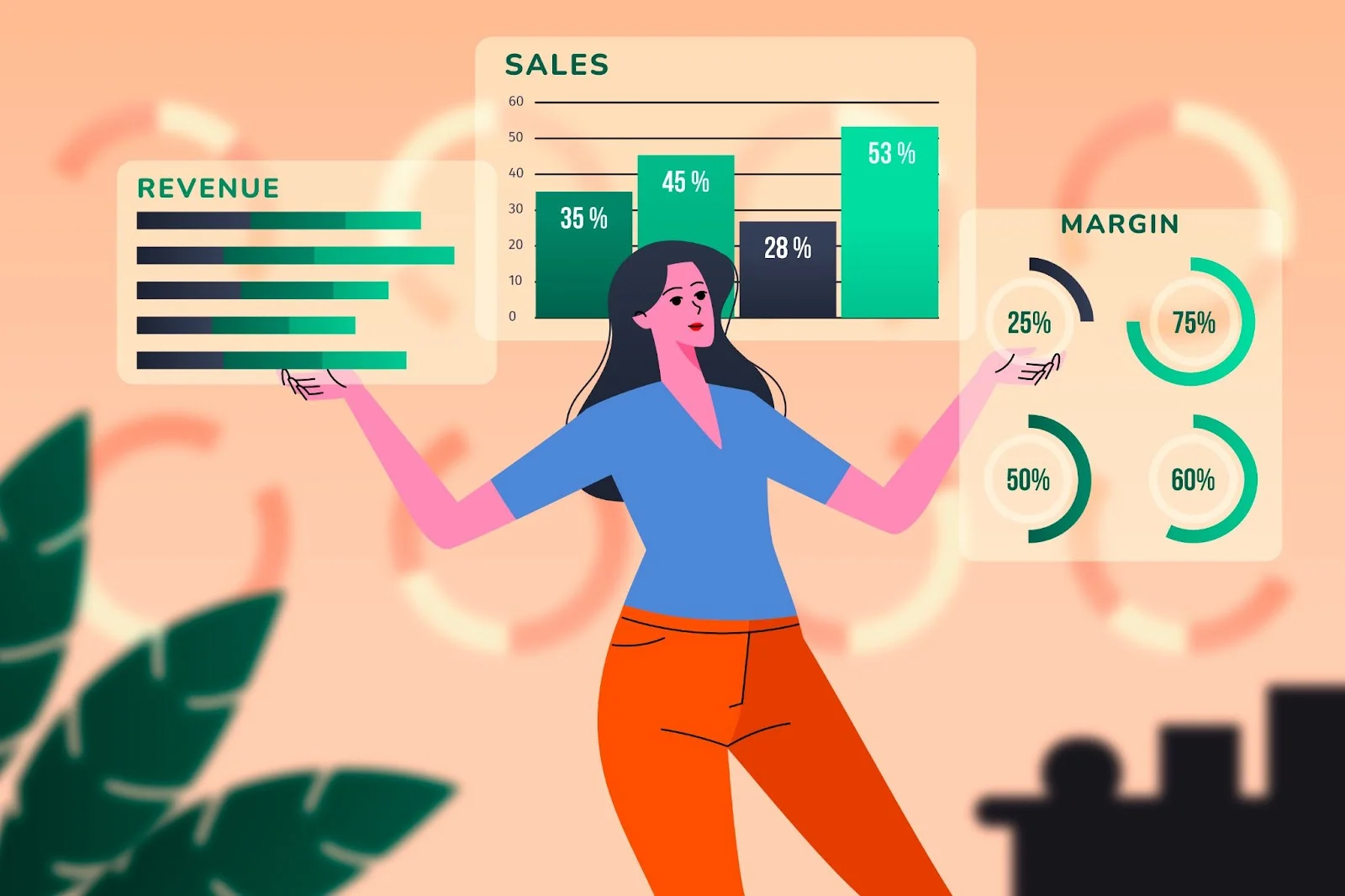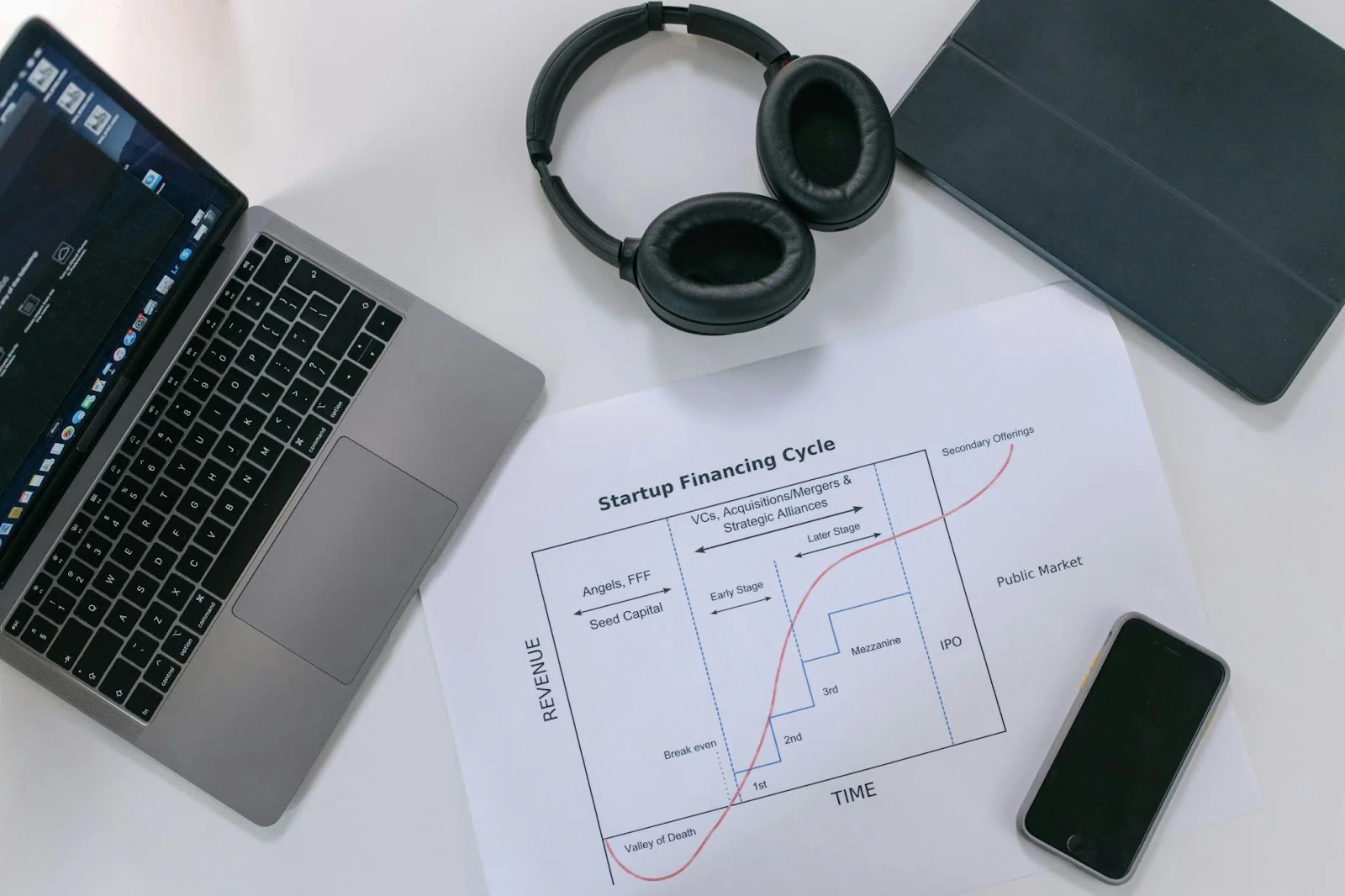How To Calculate And Improve Conversion Rate

Let’s say you run a lemonade stand. You want to know how many people see your stand and buy a drink. This tells you how well your stand converts people walking by into buyers.
Conversion rates are always the lifeblood of any online business. This can be crucial for those selling products on sites like Shopify or Magento, offering a subscription service, or merely wanting people to enter their email list.
This detailed guide covers everything you need to know about conversion rates, from the basics of calculating them to more advanced ways to improve them. Let’s jump right in!

What Is the Conversion Rate?

At its core, the conversion rate is a simple yet powerful metric that tells you how well your website or marketing efforts are performing. This represents the percentage of visitors who take a desired action on your site, such as signing up for a newsletter, buying, or filling out a contact form. It measures how effectively you can turn visitors into customers or leads.
What Is the Conversion Rate Formula?
The conversion rate formula is quite simple:

Here’s a breakdown:
- Number of Conversions: This is the number of people who take the desired action, like buying, signing newsletters, or downloading an e-book.
- Total Visitors: This is the total number of people who visit your website, see your ad, or open your email.
What Is a Good Conversion Rate?
What qualifies as a “good” conversion rate can vary greatly depending on your industry, business type, and marketing goals. Here’s a rough guide:
- 2-5%: A decent average conversion rate for most websites.
- Above 5%: Good and indicates a well-optimized marketing funnel.
- 10% or higher: Excellent and suggests a very effective marketing strategy.
To determine whether your conversion rate is reasonable, compare it to industry benchmarks and past performance. Constant improvement is key, so even if your conversion rate meets industry standards, there’s always room to optimize and grow.
Step-By-Step Guide to Calculating Conversion Rate
Calculating your conversion rate is straightforward, providing valuable insights into your website’s performance. Here’s a step-by-step guide to calculate your conversion rate:
Step 1: Define Your Conversion Goal:
Identify the specific action you want visitors to take (e.g., buying, downloading, signing up for newsletters).
Step 2: Track the Number of Conversions:
Use analytics tools (Google Analytics) or your website’s built-in tracking features to count the times the desired action is completed within a given period.
Step 3: Determine the Total Number of Visitors:
Find out how many people visited your website during the same period. Analytics tools also provide this information.
Step 4: Apply the Conversion Rate Formula:
Use the formula: Conversion Rate = (Number of Conversions / Total Visitors) x 100
Step 5: Analyze the Results:
Review your conversion rate to assess your website’s performance. A higher conversion rate indicates better performance, while a lower rate suggests areas for improvement.
Step 6: Compare Over Time:
Track your conversion rate over different periods to identify trends, measure the impact of any changes or optimizations you implement.
Step 7: Segment Your Data:
Break down your conversion rate by different segments, such as traffic sources, devices, or demographics, to gain deeper insights into customer’s behavior and preferences.
How to Optimize Conversion Rate
Conversion rate optimization (CRO) is the process of improving your conversion rate by enhancing user experience, optimizing marketing tactics, and refining your website design.

Here are some practical ways to optimize your conversion rate:
- Enhance User Experience (UX): Ensure your website is easy to navigate, visually appealing, and mobile-friendly. A seamless user experience encourages visitors to stay longer and engage more with your content.
- Improve Page Load Speed: Slow-loading pages can frustrate visitors and lead to higher bounce rates. Use tools like Google PageSpeed Insights to identify and fix issues slowing down your site.
- Create Compelling Calls-to-Action (CTAs): Your CTAs should be clear, concise, and persuasive. Use action-oriented language and make sure they stand out on the page.
- Optimize Landing Pages: Design your landing pages to be highly relevant to the ads or links that lead to them. Include strong headlines, engaging visuals, and clear CTAs to guide visitors toward conversion.
- Leverage Social Proof: Display customer reviews, testimonials, and case studies to build customer trust. Social proof can significantly influence visitors’ decision-making processes.
- A/B Testing: Test different versions of your web pages, CTAs, and other elements to see which ones perform better. Use the insights gained from these tests to make data-driven improvements.
- Personalize Content: Ensure that your content meets the needs of different audience segments. Personalized experiences can increase engagement and conversion rates.
- Simplify Forms: Make your forms more accessible and quicker to finish by reducing the number of fields. Ask for only essential information to minimize friction for users.
- Use Retargeting Campaigns: Use retargeting advertisements to bring back site visitors who have abandoned their carts. These advertisements can jog your memory of your products and entice customers back to finish the required activity.
- Analyze and Iterate: Constantly track your conversion rate and other important indicators. Use analytics tools to find areas needing work, and then iterate on your plans to achieve better outcomes.
Explore: Magento Conversion Rate Optimization Strategies Article
Why Conversion Rate Matters
Conversion rate is a key metric for several reasons:
- Maximizes Marketing Efforts: A higher conversion rate means more value from your existing traffic. This efficiency can lead to better returns on your marketing investments without increasing your budget.
- Improves Customer Insights: Analyzing conversion rates can help you learn more about your audience’s behavior and preferences. This knowledge can then be used to better address their demands by customizing your goods and marketing techniques.
- Enhances User Experience: Enhancing the general user experience on your website is frequently a part of concentrating on conversion rate optimization. Improved user experiences can result in higher levels of visitor satisfaction and loyalty.
- Increases Revenue: Even minor improvements in your conversion rate can lead to significant revenue increases. Converting more visitors into customers can boost your sales and profitability.
- Provides Competitive Advantage: A well-optimized website can set you apart from competitors. By providing a better user experience and successfully converting visitors, you may have a competitive advantage in your market.
- Supports Data-Driven Decisions: Conversion rate data provides a clear metric to measure the success of your marketing and website optimization efforts. This method is based on data, which helps you make intelligent choices and put the most critical projects at the top of the list.
- Enhances ROI: Raising your conversion rate can improve your return on investment (ROI) from your marketing efforts. This productivity allows you to use your resources more effectively and achieve better results.
Conversion Rate and Return on Investment (ROI)
Conversion rate is closely tied to ROI because both measure the efficiency and effectiveness of your marketing efforts. A higher conversion rate can boost sales and revenue without necessarily increasing your marketing budget, improving your ROI.

Let’s consider an example:
You spend $1,000 on a Google Ads campaign that drives 500 visitors to your site. If your conversion rate is 5%, 25 visitors made a purchase. If each purchase is worth $50, you’ll earn $1,250 from the campaign, leading to a positive ROI.
By improving your conversion rate from 5% to 7%, you’d get 35 customers from the same 500 visitors, earning $1,750 and boosting your ROI significantly.
How to Improve Conversion Rate
A/B Testing
A/B testing (split testing) compares two copies of a website, ad, or text to see which one works better. To get the best conversion rate, you can test things like titles, pictures, calls to action (CTAs), and form lengths.
Here’s how to conduct an A/B test:
-
Pick one element to test: Focus on one variable at a time, like the color of a CTA button or the wording of a headline.
-
Create two versions: Create two variants—Version A (control) and Version B (variation)—with the one change you want to test.
-
Measure results: Run the test for a sufficient amount of time and measure which version gets more conversions.
-
Implement the winner: Once you identify which version performs better, implement the winning variant across your site.
Large Scale vs. Small Scale Testing
When doing large-scale testing, you must make significant changes, like redesigning your site or price system. Small-scale testing makes small changes, like changing the colors or text of CTA buttons.
Both types of tests can give you helpful information. Large-scale tests can find significant ways to improve things, while small-scale tests can give you quick wins and keep you improving.
How to Use a Conversion Rate Calculator – Free Excel Template
A conversion rate calculator can simplify calculating your conversion rate for different marketing campaigns. You can create your own calculator in Excel by setting up formulas for conversion rate, ROI, and other essential metrics. Download a free Excel template and input your total visitors and conversions to get started. The calculator will automatically generate your conversion rate and other metrics to help you track performance. You can also use a simple spreadsheet:
- Create two columns: Label one Number of Visitors and the other Number of Conversions.
- Enter your data: Input the number of visitors and conversions for each time period you want to measure.
- Use the formula: In a third column, use the formula = (B2 / A2) x 100 (assuming your visitors are in column A and conversions in B).
- Format as percentage: Apply a percentage format to your results.

E-Commerce Conversion Rate Calculation Example
Let’s walk through a practical example to illustrate how to calculate the conversion rate for an e-commerce website. This example will help you understand and apply the process to your business.
Scenario: Imagine you run an online store that sells handmade jewelry. Over the past month, your website received 5,000 visitors, 150 of whom made a purchase.
- The Total Number of Visitors: 5,000.
- The Number of Conversions: 150.
- As a result, your conversion rate is: (150/5000)×100=3%
Result: Your online store’s sales rate has been 3% for the past month, meaning 3% of the people who visited your site bought something.
Analysis: A 3% conversion rate might be good for your business, but it depends on the type of business you run and your goals. It’s always possible to do better, though.
You can use this as a starting point to see how you’re doing over time and develop ways to improve your conversion rate, like improving your product pages, user experience, and running specific marketing campaigns.
FAQs
Q1: How often should I calculate my conversion rate?
A1: You should determine your conversion rate regularly, such as weekly or monthly. This allows you to monitor trends, uncover unexpected developments, and modify your strategy in a timely manner.
Q2: What factors can affect my conversion rate?
A2: Several factors can influence your conversion rate, including website design, user experience, website load speed, the quality of your content, the relevance of your offers, and the effectiveness of your calls to action.
Q3: Is a higher conversion rate always better?
A3: While a higher conversion rate is generally desirable, it’s essential to ensure that the quality of your conversions remains high. Focus on acquiring and converting the correct audience to ensure long-term development and success.
Q4: What is the difference between conversion rate and click-through rate (CTR)?
A4: Conversion rate is the proportion of visitors who do the intended action on your website, whereas click-through rate (CTR) is the percentage of users that click on a link or ad. Both indicators are vital, but they serve distinct functions in assessing your marketing efforts.
Q5: How do I set realistic conversion rate goals?
A5: Set realistic goals by analyzing industry benchmarks, your historical data, and your business objectives. Aim for incremental improvements and regularly review your progress to adjust your strategies as needed.
Conclusion
We’ve discussed why conversion rates are important, how they relate to return on investment (ROI), and how you can improve your conversion rate. Each approach is essential for turning website visitors into loyal buyers.
Remember that you need to keep working to improve your return rate. Be ready to try new things and regularly monitor your measurements and data. If you stay vigilant and use data, you can keep improving your plans and getting better results.
Read more: Top 12 Strategies for Shopify Conversion Rate Optimization







